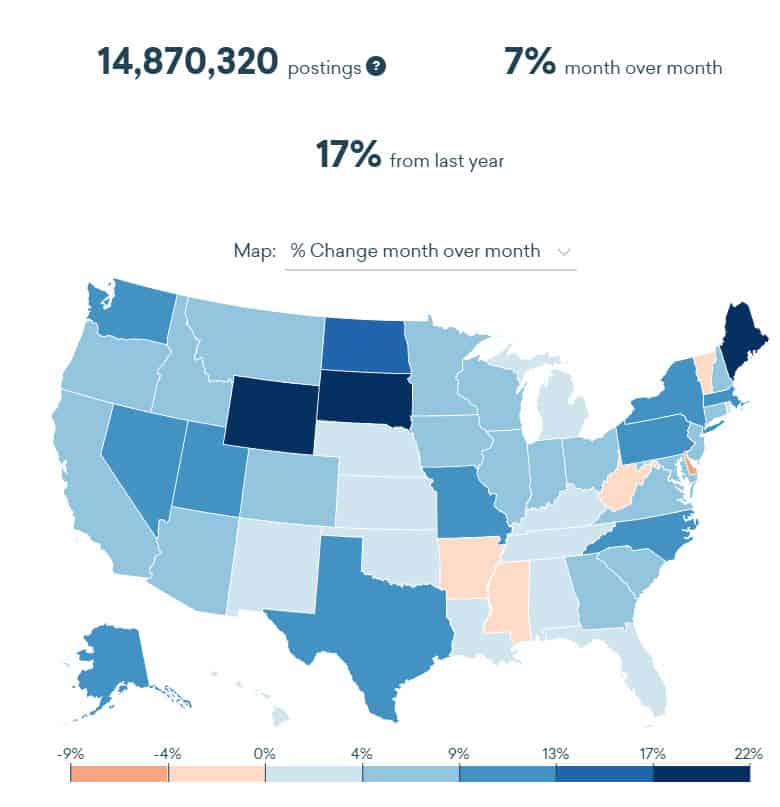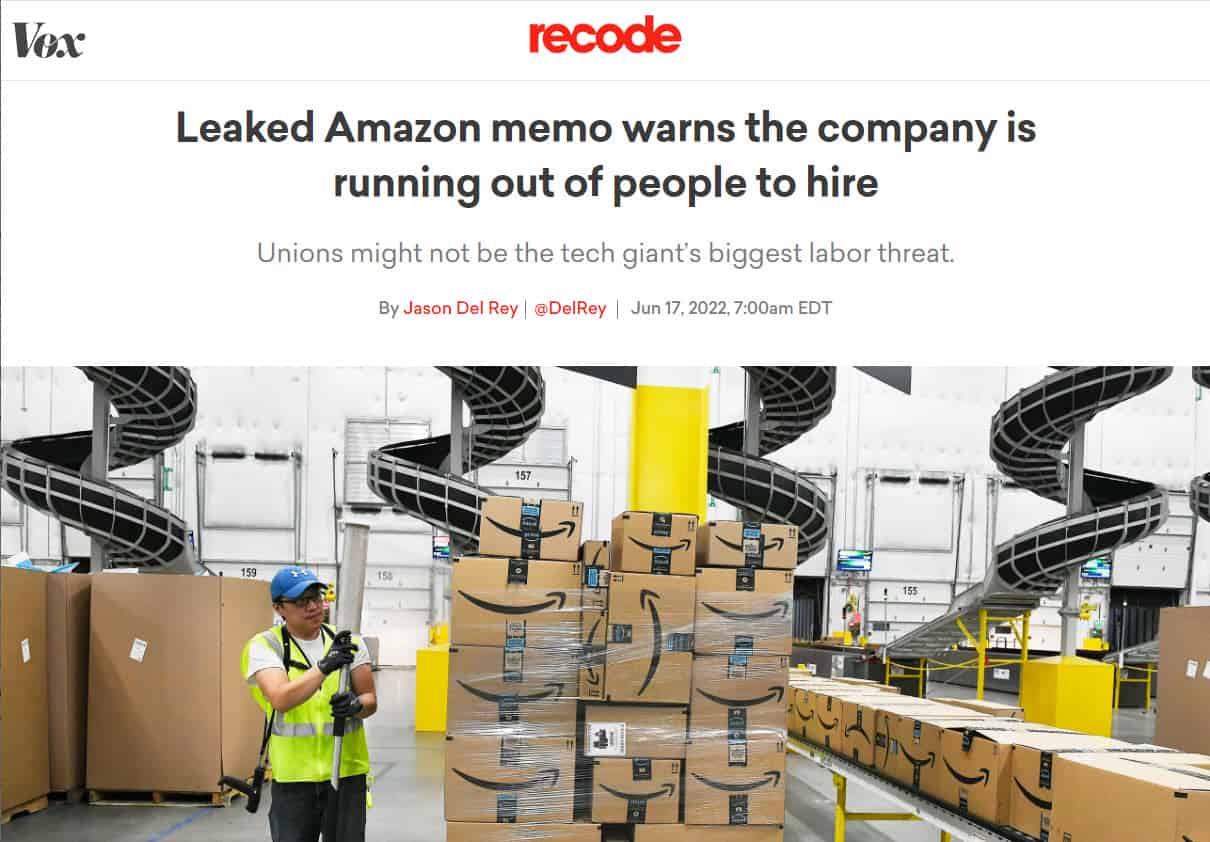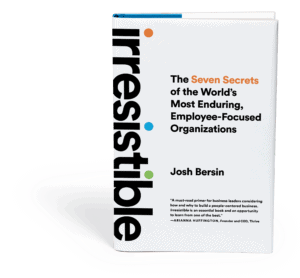Amazon Is Running Out Of Workers. You Can Avoid This Problem.
Despite the biting headlines about the stock market correction and possible economic slowdown, one thing is very clear. Jobs are being created.
This week’s BLS study shows that the US unemployment rate remains very low at 3.6% and is 2.2% lower than a year ago. In other words, companies are hiring.
EMSI believes there are 14.9 million jobs open (almost one in ten) and that we have 17% more jobs open now than a year ago. So while some of the over-funded tech companies (and Crypto) companies are laying people off, they’re in the minority.
 |
But to be more specific, let me highlight what’s going on at Amazon (the country’s second-largest employer.)
Amazon Reports They Are Running Out Of Workers
Vox just published a pretty amazing story. According to internal Amazon reports, the company is “running out of people to hire.” What’s going on here?
 |
Well if you read the article (and this is consistent with stories we hear from Amazon employees), the company built a talent model designed for turnover. In other words, Jeff Bezos deliberately wanted employees to leave every year. As a result, the company brutally penalizes employees for low performance, forcing a turnover rate over 100% in many areas.
While I can’t speak for the entire company, I have talked with warehouse managers who told me the turnover is sometimes over 200% (every job churns twice each year). Imagine the hiring, onboarding, and training costs this creates. I can’t see how this is a good business strategy, yet the company still operates this way.
As the article points out, many internal Amazon folks have figured out that this is a death-spiral strategy. Not only is it hard for the company to grow, high turnover damages the company’s employment brand and it becomes harder and harder to hire. (To say nothing of the union issue.)
 As I write about extensively in my book Irresistible, companies that operate this way underperform over time. Aerospace contractors are famous for layoffs whenever they lose a large contract (other companies also operate this way). The HR leaders at these companies told me explicitly that this policy, while good for financial results, made it increasingly difficult to hire. Eventually, they simply cannot find long-term workers at all.
As I write about extensively in my book Irresistible, companies that operate this way underperform over time. Aerospace contractors are famous for layoffs whenever they lose a large contract (other companies also operate this way). The HR leaders at these companies told me explicitly that this policy, while good for financial results, made it increasingly difficult to hire. Eventually, they simply cannot find long-term workers at all.
I am in no position to criticize Amazon – they are a very smart, crafty, successful company. But at this level of scale, the company has to become more Irresistible.
What Does This Say About The Economy
As we talked about extensively at our Irresistible Conference last month, there’s only one message here. Even if the economy does slow down (which is by no means clear), the only winning strategy for growth is to focus on your employees. As I’ve seen in many economic cycles, when you take care of your people they take care of your company. If you treat them poorly, then… well all bets are off.
Right now people seem to be emulating Elon Musk and his attitude toward high performance and competition. Let me remind you, as David Gelles points out clearly in his new book “Jack Welch, The Man Who Broke Capitalism” (highly recommended), the whole idea of “up or out” was a failure. Not only did it turn GE into a failed money machine, it proliferated into other “GE-Executive led companies” who later fell on hard times.
My book, Irresistible, is all about the solution to this problem. Yes, we have to hold people accountable – but who are you, as a CEO or leader, to decide who is “capable of high performance?” Shouldn’t we assume that all human beings are capable of doing more? That’s certainly what history proves.
The GE idea of “forced ranking” and 9-box grids was flawed at its core. (Welch only created it to clear out GE’s corporate bureaucracy.) When I first became an HR analyst I kept hearing people asking me “how does GE do this?” and I learned all about talent reviews, calibration, performance management, and forced ranking. Software companies like SuccessFactors tried to industrialize it.
Well it never felt right to me and it has now been proven wrong. Even Microsoft, which had a policy of eliminating the bottom 10% every year during Ballmer’s reign, did away with it.
The new world of work is different. Every company is dependent on its people, and the idea of “replacing low performers with high performers” is just silly. Your job as a leader is to hire the right people, then train and motivate them to succeed. If they’re in the wrong job then that’s your problem, not their problem.
As far as the economy goes, yes we have a slowdown. After 14 years of near-zero interest rates, it’s time to pay the piper. Asset prices are dropping (stocks, crypto, housing) and commodities and other raw materials are in high demand. This is a reset we badly needed, and if you’re on the wrong side of it you’ll get hurt.
Are we in for a massive recession? Perhaps but it’s not clear to me. With jobs and demand as high as they are, I think we are simply seeing the “deflation” of assets, so we have to tough this out.
As far as labor is concerned, our workforce is more important than ever. If your turnover rate is high maybe it’s a problem you created. Are you hiring the right people in the first place? Are you taking care of them, training them, and moving them into new roles?
If you’re not, then you may feel like Amazon. And the Amazon culture is precisely what happened to GE. I’m not saying Amazon is going away, but let’s just learn from the past.
Additional Resources
How Do You Build an Irresistible Company? Here’s how Starbucks, Walmart, Microsoft, Lego Group, L’Oreal, Chevron, and Cedars Sinai thrive.
How Work Design And Job Design Are Holding Companies Back
Unleashing Human Potential: The Real Secret To Business Success


